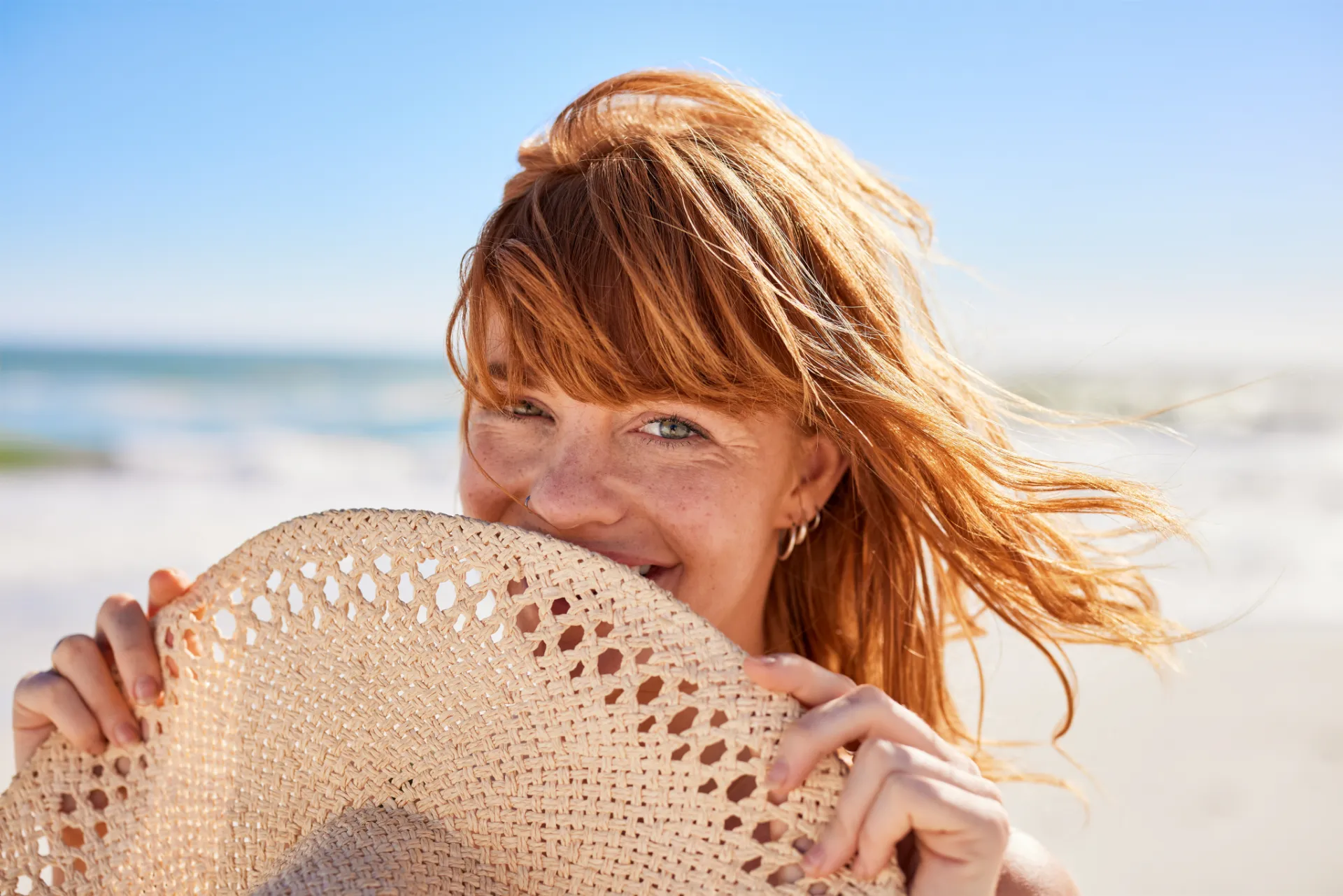From ancient mythology to modern Hollywood, no hair shade captivates a mystique and glamor quite like blonde. An estimated 50-80% of women surveyed have dyed their hair a golden hue at some point.
But what makes flaxen follicles so alluring - and how has the pursuit of blonde evolved over millennia? Let's examine the science behind achieving lighter shades and trace highlights of blonde hair history.
THE BIOLOGY OF BLONDE HAIR
Let’s start with what makes human hair color. Primarily coming from two melanin pigments: eumelanin (responsible for brown and black shades) and pheomelanin (contributing golden and red tones), blonde hair occurs when someone has low levels of eumelanin, allowing the pheomelanin undertone to shine through.
Interestingly, natural blondes are increasingly rare, constituting only about 2% of the global population, according to the WHO. So why the comparative scarcity of towheads? The alleles for light hair are recessive genetic traits. When someone receives a dominant brown/black allele from even one parent, it overrides any blonde allele from the other parent, so both parents must pass on recessive alleles for a child to be born blonde.
On top of that, many natural blondes' hair darkens with age - as eumelanin production ramps up with puberty, it overshadows the pheomelanin base for an overall darker appearance over time.
THE CHEMISTRY OF COLORING BLONDE
Hair bleaching products work to remove the dark pigments to allow the golden molecules to show. When applied, the formula's alkaline agent (typically ammonium hydroxide) opens the hair's cuticle, enabling the second active ingredient, an oxidizer like hydrogen peroxide, to penetrate the cortex. There, it dissolves the melanin pigments to stop hair's ability to hold onto color.
The strength of the oxidizing agent and the amount of time it processes determines the level of lift, from pale yellow to platinum white. After reaching the optimal lightness level, many follow by depositing semi-permanent dye containing small color molecules that wedge inside the shaft to lend more natural, golden, honey, ash or pearl tones instead of yellow.
So, while bleaching involves the removal of natural pigment, toning replaces it with melanin-like synthetic pigment. Finding the ideal pH, oxidizer volume and toning shade makes all the difference in attaining those coveted buttery blonde hues. That's why seeking professional colorists specializing in the chemistry of blonde results in beautiful, believable, healthy blonde hair.
The history of lightening treatments dates back millennia.
BLONDE THROUGH THE AGES
Egyptian women of the Ptolemaic dynasty were some of the first ancient people known to lighten their locks as early as 300 BC. They used a mixture of quicklime, water and honey to generate hydrogen peroxide via chemical reaction to lift pigment when applied as a paste, sitting in the desert sun. Talk about some hot highlights!
But it was in the 1860s that hydrogen peroxide finally saw commercial use as a hair lightener. In 1867, chemist E.H. Thénard first noted how the chemical could bleach substrates. Coupled with advances in electricity providing safer, controlled heat sources, peroxide formulas mixed by hairdressers lent more predictable color lifting than ever before.
By the 1930s-1940s, silver screen sirens like Jean Harlow, Mae West and Marilyn Monroe popularized the appeal of the platinum blonde bombshell, while Clairol debuted one of the first at-home color kits. Fast forward to the 1990s when the show Baywatch unleashed a tidal wave of women sporting sun-kissed balayage requesting natural-looking dimensional blonde.
In recent years, a spectrum of updated "cool girl" shades, from buttery champagne and creamy café au lait to earthy wheat blondes, have flooded social media feeds as the gold standard. Yet one fact remains throughout history - the universal draw to a beautifully lightened mane.

THE MARILYN MONROE EFFECT: DEFINING THE PLATINUM BLONDE BOMBSHELL
No single figure epitomizes the seductive allure of blonde hair quite like Marilyn Monroe. Born Norma Jeane Mortenson, the actress became a global sex symbol in the 1950s, her platinum locks and red lipstick defining the era's beauty ideal.
Monroe's signature champagne coiffure perfectly complemented her creamy complexion and contrasted with heavily lined bedroom eyes. She often quipped, "I'm selfish, impatient and a little insecure. I make mistakes, am out of control, and sometimes hard to handle. But if you can't handle me at my worst, then you sure as hell don't deserve me at my best" - a sentiment reflecting the bombshell paradox of being both delicately feminine and fiercely independent.
Her role as bubbly gold digger Lorelei Lee in the 1953 classic Gentlemen Prefers Blondes cemented her status as a comedic actress with undeniable sex appeal. She subverted the "dumb blonde" trope by portraying characters with street-smart savvy.
Offscreen, Monroe's personal life grabbed headlines while she battled studios to earn recognition as a serious actress who remained a glamour goddess bombshell. Rarely seen without her platinum shade, she helped establish the omnipresent desire for bright blonde that defined the period, but it wasn’t an easy task.
Sadly, Monroe's life and career were cut short by her untimely death at age 36 in 1962. Yet her legacy as the definitive blonde bombshell lives on, with her likeness still widely referenced in pop culture. While trends may change, her bombshell image remains timeless.

MADONNA: REINVENTING BLONDE FOR THE MTV GENERATION
In the 1980s, a new blonde icon burst onto the scene, breaking barriers and reshaping pop culture in her wake: Madonna. With her trademark platinum hair and bold fashion choices, the Queen of Pop revolutionized music and style for the MTV generation.
Madonna's rise to fame coincided with the explosion of music videos, and she maximized the visual medium to showcase her chameleon-like transformations. In her 1984 breakout hit "Like a Virgin," she rocked a voluminous platinum blonde mane teased to the heavens, complete with dark roots and a black hair bow. The look became instantly iconic, copied by millions of fans worldwide.
Throughout the '80s, Madonna continued experimenting with her blonde hair as an extension of her artistry, each style pushing boundaries while still maintaining her signature blonde hue.
In 1990, Madonna paid tribute to the original blonde bombshell Marilyn Monroe in her "Vogue" music video, emulating Marilyn's red lips and platinum curls. As Madonna's career evolved in the '90s and beyond, she continued to experiment with different shades of blonde, from icy platinum to golden honey.
Madonna's ever-changing blonde hair remained constant, reflecting her fearless artistic vision and trendsetting style. She paved the way for future pop chameleons, proving that reinvention is the key to longevity in the entertainment industry.

GWEN STEFANI: ROCK'S PLATINUM PRINCESS
In the 1990s, as grunge and punk rock ruled the airwaves, a new blonde icon emerged with her own style: Gwen Stefani. As the lead singer of No Doubt, Stefani's platinum hair and bold red lips became synonymous with the band's unique blend of ska, punk, and pop.
Stefani first rose to prominence in the early '90s with No Doubt's breakthrough album Tragic Kingdom. In music videos like "Just a Girl" and "Spiderwebs," she sported platinum blonde hair with black undertones, often styled in high ponytails or braids. Her look was equal parts retro pin-up girl and modern punk rock queen, setting her apart from other female musicians of the era.
As No Doubt's success grew, so did Stefani's influence on fashion and beauty. She launched her clothing line, L.A.M.B., in 2003, and her signature style - which often included platinum hair, red lips, and bold prints - became a hallmark of the brand. Stefani's look was so distinctive that it inspired countless imitators and helped define the aesthetic of the early 2000s.
Throughout her career, Stefani has experimented with different shades of blonde, from icy platinum to warm honey. She's also played with various lengths and styles, from sleek bobs to long, textured waves. Yet, no matter how she wears it, her blonde hair remains integral to her identity as an artist and fashion icon.
READY TO ACHIEVE YOUR BLONDE AMBITION?
At Blonde Faith Salon, we love demystifying the chemistry and history behind the iconic shade for those eager to find their own blonde.
Whatever version you’re looking to show off, book your consultation with Blonde Faith Salon today to discover your next, perfect blonde shade














